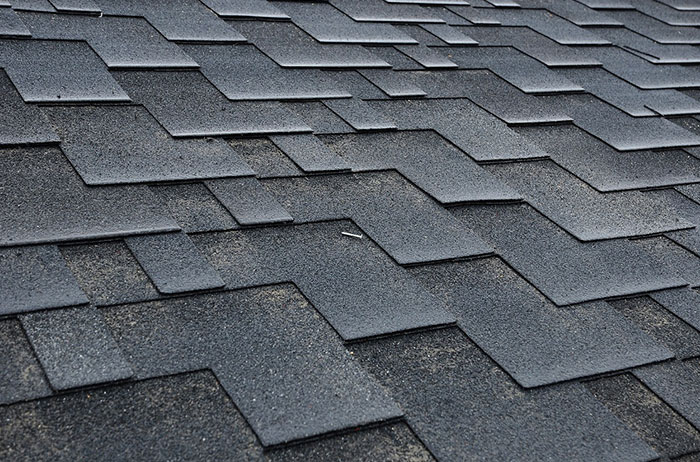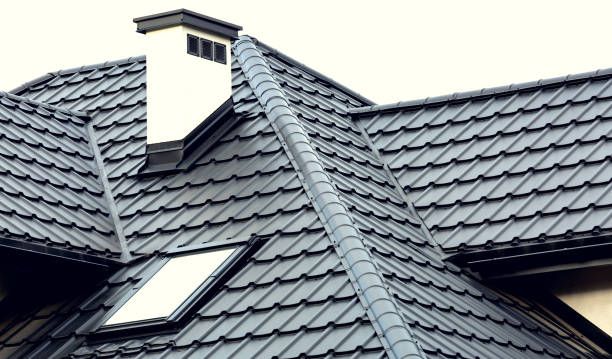It is a common experience to see a few days each month when the temperature rises to the point where you need to turn on your air conditioner. When the temperature becomes too hot, your air conditioner must work harder to cool your home.
This, in turn, translates to higher conditioning bills. Fortunately, other inventive ways exist to beat the heat and keep your house cool. One of them is a cool roof that reflects light.
Continue reading to find out how cool roofs help.
What is a Cool Roof?
A cool roof is built with materials and construction processes that ensure it has a coating to help lower surface temperature and increase solar reflectance.
Cool roofs are roofs built to reflect heat instead of absorbing it. It works with the same principle that makes white or luminous surface reflect heat away, unlike black surfaces, which absorb heat.
How A Cool Roof Works
The way cool roofs work is very simple. They reflect sunlight from their surface rather than absorb solar energy like conventional roofs. This process returns most of the solar radiation to the atmosphere and transfers very little into the building.
Additionally, many cool roofs usually feature high thermal emittance capabilities. This capability enables them to transfer the absorbed heat to the atmosphere quickly.
Hence, cool roofs can quickly reduce their surface temperature thanks to their ability to reflect and emit solar radiation. The reduced roof temperature further helps to reduce the already transferred heat inside the building.
How Cool Roofs Can Lower Your Air Conditioning Bills
Since cool roofs usually reflect more sunlight than conventional roofs, they always absorb lesser solar energy. Consequently, this reduces the temperature penetrating the building. This is similar to the way wearing light-colored clothes keeps you cool under the sun.
Conventional roof surfaces can reach temperatures that are 82°F or higher than the surrounding air. Contrary to that, most cool roofs’ highest surface temperatures don’t exceed that of the surrounding air by more than 14oF.
Generally, cool roofs’ surface temperatures are usually about 60–70oF cooler than conventional roofs’ surface temperatures. This reduces the heat transfer from the roof directly into your home. Consequently, the reduced heat transfer means your air conditioner will have to deal with less heat, which in turn means less energy consumption.
Other Benefits of Cool Roofs
Aside from how cool roofs benefit house owners by reducing air conditioning costs, they also benefit a building in other ways.
- Reduced air pollution and greenhouse gas emissions: Since your air conditioning system is not consuming numerous energy, the carbon emissions from your home will reduce. Furthermore, lower energy demands will also reduce the possibility of power outages in the community.
- Long roof lifespan: Cool roofs do not absorb much heat, so they are more resistant to sun damage and can last longer than conventional roofs.
- It helps small or inefficient air conditioners be more capable of cooling the home in extremely hot weather.
- It improves the ambiance and comfort of homes without air conditioners.
- Cool roofs contribute to reducing the temperature in the environment.
Roof types and cool roof alternatives
There are two main categories of roof types which are low slope and steep slope roof types. Low-slope roofs have a slope of 14 degrees or less (3-12). Roofs with steep slopes have a slope of more than 14o (3-12).
Low-slope roofing systems include:
· Built-up roofing (BUR):
The most conventional roofing system in the US is built-up roofing. It usually consists of a two to five-layer roofing membrane, which experts build by stacking several layers of asphalt and reinforced roofing fabric. Sometimes, they use coal tar in place of asphalt, depending on the roof’s age.
You can also cover recently installed built-up roofing with a UV-resistant fiberglass cap sheet that complies with cool roof requirements. As an alternative, built-up roofing that already complies with cool roof requirements can have higher solar reflectance and thermal emittance when you apply cool roof coatings.
· Modified bitumen (MB):
Modified bitumen is an asphalt sheet that has undergone plastic modification to give it a rubberized and plasticized feel. Professionals usually use polymers like styrene butadiene styrene or atactic polypropylene (APP) to alter the asphalt. After modifying the bitumen membrane sheets, they heat them to weld them together over asphalt or built-up roofing.
You can fit UV-resistant fiberglass cap-sheet onto modified bitumen roofing as long as they meet cool roof standards. Alternatively, you can install cool roof coatings over modified bitumen roofing to increase the roof’s solar reflectance and thermal emittance capabilities.
· Spray polyurethane foam (SPF):
Spray polyurethane foam roofs are applied as a liquid that hardens as it dries to the roof. They are usually foams formed by heating isocyanate and polyol in a one-to-one ratio. The result of the application is that it typically gives the roof improved insulating capabilities as well.
Other low-slope roof types include single-ply thermoplastic olefin (TPO), single-ply ethylene, propylene, diene monomer (EPDM), and single-ply polyvinyl chloride (PVC).
Steep slope roofing materials usually include asphalt/composite shingles, clay/concrete tile, and metal.
· Asphalt/Composite shingles:
Shingled roofs are used to waterproof high-slope roofs. It is one of the most often used roofing systems in homes. The widespread use of shingled roofing is due to its low cost and ease of installation. Generally, asphalt shingles for cool roofs usually contain solar reflectance-boosting particles.
· Tile roofing:
Clay and slate are some of the materials used to make tiles for roofing. Since they are made of soil, their colors tend to differ. Some will naturally reflect enough light to meet cool roof requirements, while some may not. Those that do not may be coated or glazed to create specialized colors and surface qualities.
Talk to a Certified Contractor
You can contact a certified contractor to help you fix a cool roof for your home if you want to enjoy the benefits. Our experts at shoreline roofing can help you with your cool roofing needs, from installation to maintenance. Email us at ed@shorelineroofing.ca or call us at (250)413-7967 to learn more about our roofing services.



